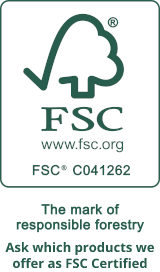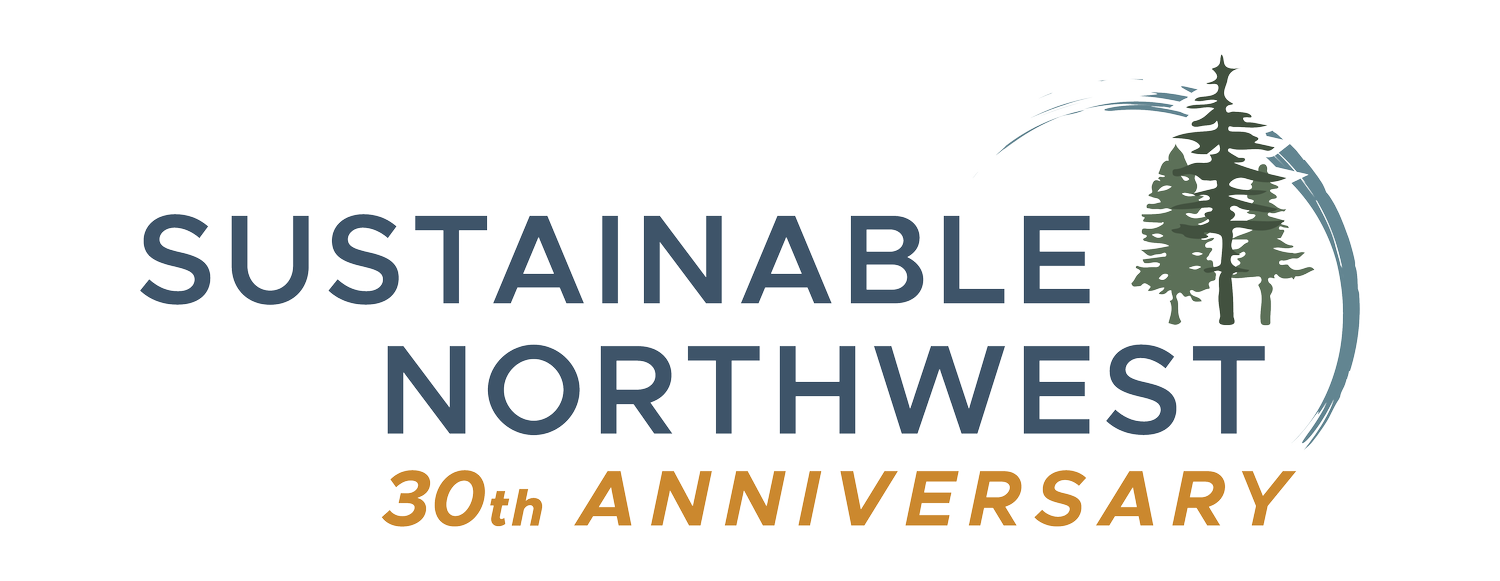In the Sticks Sawmill
Juniper Mill Visits
Deep in the heart of eastern-central Oregon is some of the most breathtaking high desert landscape in the country. This is where Western Juniper calls home and where I had the immense pleasure of touring some of the juniper sawmills and getting to know the sawyers we work with. I left with a much deeper understanding and appreciation of what it takes to get this amazing wood into our lumberyard. In this three-part series, I’ll take you on my journey to connect to the people and the land, and gain a sense of place in Juniper Country.
First, a little back story: Western Juniper, Juniperus occidentalis, is an evergreen conifer that is native to Oregon, but years of fire suppression have allowed an explosion of the population, growing from a territory of about 1 million acres to 7-10 million acres. This native has become invasive. Once pristine grassland and prairies are now overrun with juniper and dozens of the marked creeks on the drive along the Journey Through Time Scenic Byway were dry as a bone. One of these thirsty trees soaks up 25-30 gallons of water a day in an already parched region. The result is devastating the watersheds and drying up the tributary creeks that feed the John Day River, threatening salmon, the Greater Sage Grouse, and other wildlife, not to mention the humans that live in the area. I knew that the invasion of juniper is a real problem here, but seeing the effects first hand was startling. If water is life, this area is in critical condition.

In response to the proliferation, the non-profit and our parent company, Sustainable Northwest, helped forge The Western Juniper Alliance, bringing together government, civic leaders, non-profit organizations, land owners and businesses to address the issues and create solutions that have a positive impact on the environment, while boosting the economy of the surrounding rural communities hungry for work. The impact to the watershed after removing juniper is profound and almost immediate. Within a month of cutting juniper from along the creek beds, pools of water appear where there was none. Within a year, the grasses grow lush again, and signs of wildlife return.
Among the reasons Sustainable Northwest Wood exists is to support small mills in rural areas. We are the retail outlet and distributor for about a dozen juniper sawmills throughout Oregon, selling the products they produce and creating markets throughout the Pacific NW and beyond. These juniper sawyers are turning an ecological problem into an opportunity and are now cutting lumber instead of firewood. Granted, a fair amount of it still ends up as firewood, but the bulk of the logs become landscaping lumber that is significantly longer lasting than its counter parts cedar and redwood. Only about 10% of the logs that are harvested make the #1 grade to become the beautiful juniper decking, flooring, siding, wall paneling, and butcher block countertop material we have available at our shop. My quest was to see what it takes to go from log to lumber.

First stop: In the Sticks Juniper Mill located in Fossil, Oregon. And it truly is “in the sticks.” Fossil is about three hours from Portland, a drive through steep, rugged canyons that are a geologist’s dreamland, past acres of wind farm turbines, rolling hills and jaw dropping vistas. It is home to more mule deer than people. In some stretches of the drive, I saw more bald eagles than cars. It is a tiny town of about 450 people, which is the same size town I grew up in Kentucky, where everyone knows everyone, and most people scratch together a living by juggling at least a couple jobs.
Owner, sawyer, and entrepreneur, Kendall Derby, lights up when he sees me and greets me with a warm welcome. He has a Hoss Cartwright quality about him, with an infectious smile and an unassuming demeanor. He’s an epic storyteller and draws you in with tales that always begin with “Oh, I’ve got a good story for you…”


Kendall has a long history in the industry. He grew up with a dad in the Forest Service, so his play grounds were state and national parks. Born in New Hampshire, his formative years were spent in Kentucky in the Daniel Boone National Forest, which is my neck of the woods, and the Sierra Mountain range in Nevada. It was in the Sierras that he first realized he was in love with the mountains. A love not unlike how he loved his own mother. A love like what he came to find with his wife, Amy. The mountains are a part of who he is. And I was deeply moved by the connection.
He was introduced to his wife Amy by a mutual friend and after 18 years together, they operate like a well-oiled machine, tending to the farm chores, feeding the chickens and mucking the horse stalls at the end of their work day. Amy works for Oregon State University as the Wheeler County Extension Agent. She’s just returned from a leadership retreat with more than 100 teens involved in the 4-H program. She and Kendall have hosted 4-H Urban Exchange students over the years in an effort to bridge a very real rural–urban divide, and give youth in both areas a chance to understand natural resource management issues, and walk a mile in the other’s shoes.
Kendall was a late bloomer, earning a degree from OSU in Rangeland Ecology & Management at the age of 27. He’s both an environmentalist and a realist. He has a deep understanding of the rural rancher. He hunts. He fishes. He’s on the planning committee for Wheeler County, the poorest county in the state. He spent a number of years in the Forest Service until an entrepreneurial itch just had to be scratched.

In 2004, Kendall milled his first log from a piece of land he purchased as a timber sale in Dayville, Oregon. He intended to log the timber and sell half of it to high end furniture makers. He chuckles at his first “failed idea.” But the love for the work stuck, and in 2007 he moved his milling operation to its current location in Fossil. He runs a computerized wood-mizer sawmill, which is high tech in comparison to some of the other mills I would visit. He cuts a log into a 6x6 landscape timber in a matter of minutes without touching it. He has a kiln for drying lumber, which is a definite competitive advantage, and adds significantly value to his offerings. He offers a drying service to other sawmills in the area, which also helps boost his sales.
He currently has two employees and is looking to hire at least a couple more. But with a population of 450 people and a median age of 63, there simply isn’t a pool of qualified people to hire to run the mill. He muses about ways to keep the next generation in the county to improve the workforce. In 2018, Fossil High School had a graduating class of three. Yes, THREE. And the young people are not staying. There’s simply not much to keep them here.
Aside from the workforce, running a juniper sawmill has the additional obstacles of the rural location, which hampers shipping the product, high equipment costs, low margins, and a largely unexplored product. He’s seen a dozen mills start up and fail. He’s come close a couple times himself. But still he persists. He wears all the hats: mill owner, sawyer, marketing, sales, blog writer, web master, mechanic, purchaser, and the customer service guy who helps the local furniture maker find the perfect slabs of juniper in between answering my relentless questions. He is a true renaissance man with a story to tell - one we hope will carry on and stir the imaginations of the next generation.
You can read more about this mill visit tour in our Sustainable Wood Stories - the next stop at South Fork Gardens Juniper Mill in Dayville and then Levi's Sawmill Services in La Pine.

Project Support
Find local sustainable wood products in Portland Oregon

Our Why
We exist to promote Good Wood in the Pacific Northwest and beyond
Sustainable Northwest Wood
2701 SE 14th Ave.
Portland, OR 97202
Monday - Friday
8am to 5pm

© 2025 Sustainable Northwest Wood

Our nonprofit parent company is Sustainable Northwest